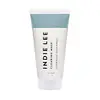What's inside
What's inside
 Key Ingredients
Key Ingredients

 Benefits
Benefits

 Concerns
Concerns

 Ingredients Side-by-side
Ingredients Side-by-side

Water
Skin ConditioningGlycerin
HumectantGlycolic Acid
BufferingSqualane
EmollientCaprylic/Capric Triglyceride
MaskingStearyl Alcohol
EmollientArachidyl Alcohol
EmollientClay Mineral Oxides
Skin ConditioningBehenyl Alcohol
EmollientSodium Hydroxide
BufferingLactic Acid
BufferingPyrus Malus Fruit Extract
Skin ConditioningCapryloyl Glycerin/Sebacic Acid Copolymer
Skin ConditioningVaccinium Myrtillus Fruit Extract
Skin ConditioningSaccharum Officinarum Extract
MoisturisingAcer Saccharum Extract
Skin ConditioningKaolin
AbrasiveSodium Hyaluronate
HumectantXanthan Gum
EmulsifyingDiheptyl Succinate
EmollientCitrus Aurantium Dulcis Fruit Extract
MaskingCitrus Limon Fruit Extract
MaskingCitric Acid
BufferingTartaric Acid
BufferingGlycyrrhiza Glabra Root Extract
BleachingCitrus Limon Peel Oil
MaskingMontmorillonite
AbsorbentIllite
AbrasiveAcacia Senegal Gum
MaskingBiosaccharide Gum-1
HumectantArachidyl Glucoside
EmulsifyingPolyacrylate Crosspolymer-6
Emulsion StabilisingPhenoxyethanol
PreservativeEthylhexylglycerin
Skin ConditioningSodium Phytate
Limonene
PerfumingWater, Glycerin, Glycolic Acid, Squalane, Caprylic/Capric Triglyceride, Stearyl Alcohol, Arachidyl Alcohol, Clay Mineral Oxides, Behenyl Alcohol, Sodium Hydroxide, Lactic Acid, Pyrus Malus Fruit Extract, Capryloyl Glycerin/Sebacic Acid Copolymer, Vaccinium Myrtillus Fruit Extract, Saccharum Officinarum Extract, Acer Saccharum Extract, Kaolin, Sodium Hyaluronate, Xanthan Gum, Diheptyl Succinate, Citrus Aurantium Dulcis Fruit Extract, Citrus Limon Fruit Extract, Citric Acid, Tartaric Acid, Glycyrrhiza Glabra Root Extract, Citrus Limon Peel Oil, Montmorillonite, Illite, Acacia Senegal Gum, Biosaccharide Gum-1, Arachidyl Glucoside, Polyacrylate Crosspolymer-6, Phenoxyethanol, Ethylhexylglycerin, Sodium Phytate, Limonene
Water
Skin ConditioningBentonite
AbsorbentZinc Oxide
Cosmetic ColorantColloidal Sulfur
AntimicrobialPropanediol
SolventGlycolic Acid
BufferingSalicylic Acid
MaskingHyaluronic Acid
HumectantCamphor
MaskingCetyl Alcohol
EmollientGlyceryl Stearate
EmollientChondrus Crispus Extract
Skin ConditioningAnthemis Nobilis Flower Extract
MaskingTitanium Dioxide
Cosmetic ColorantLimonene
PerfumingEthylhexylglycerin
Skin ConditioningPotassium Sorbate
PreservativeIngredients Explained
These ingredients are found in both products.
Ingredients higher up in an ingredient list are typically present in a larger amount.
Ethylhexylglycerin (we can't pronounce this either) is commonly used as a preservative and skin softener. It is derived from glyceryl.
You might see Ethylhexylglycerin often paired with other preservatives such as phenoxyethanol. Ethylhexylglycerin has been found to increase the effectiveness of these other preservatives.
Glycolic Acid is arguably the most famous alpha hydroxy acid (AHA) with tons of research backing its benefits.
It is found naturally in sugar cane but the form used in skincare is usually synthetic for purity and stability.
Glycolic acid removes the top layer of dead skin cells to allow newer and fresher ones to emerge.
AHAs work by breaking down the structural “glue” that holds old skin cells in place. When that buildup is gone, your skin can renew itself more efficiently.
Research also shows glycolic acid stimulates collagen production, helping to firm and thicken the skin over time. This is one of its biggest advantages over other AHAs.
Overall, glycolic acid helps with:
Fun fact: Glycolic acid boosts skin hydration by helping it produce molecules that increase hyaluronic acid naturally.
To work best, glycolic acid products should have a pH between 3-4 (that’s where exfoliation is most effective but still gentle on skin).
The pH and concentration of a product are key to its effectiveness:
It is normal to feel a slight stinging sensation when using glycolic acid. This usually fades as your skin adjusts.
Because glycolic acid has the smallest molecular size in the AHA family, it can penetrate deeper, which enhances its effectiveness but also makes it more likely to irritate sensitive skin.
If your skin is very sensitive or prone to rosacea, glycolic acid may be too strong; in that case, try milder options like lactic acid or a PHA instead.
Recent studies suggest glycolic acid might even help protect against UV damage. But don’t skip sunscreen! Freshly exfoliated skin is more sensitive to the sun.
Glycolic acid is a skincare superstar. It smooths, brightens, hydrates, and firms the skin. Unless you’re highly sensitive, it’s well worth adding to your routine.
Read more about some other popular AHA's here:
Learn more about Glycolic AcidLimonene is a fragrance that adds scent and taste to a formulation.
It's found in the peel oil of citrus fruits and other plants such as lavender and eucalyptus. The scent of limonene is generally described as "sweet citrus".
Limonene acts as an antioxidant, meaning it helps neutralize free radicals.
When exposed to air, oxidized limonene may sensitize the skin. Because of this, limonene is often avoided by people with sensitive skin.
The term 'fragrance' is not regulated in many countries. In many cases, it is up to the brand to define this term. For instance, many brands choose to label themselves as "fragrance-free" because they are not using synthetic fragrances. However, their products may still contain ingredients such as essential oils that are considered a fragrance.
Learn more about LimoneneWater. It's the most common cosmetic ingredient of all. You'll usually see it at the top of ingredient lists, meaning that it makes up the largest part of the product.
So why is it so popular? Water most often acts as a solvent - this means that it helps dissolve other ingredients into the formulation.
You'll also recognize water as that liquid we all need to stay alive. If you see this, drink a glass of water. Stay hydrated!
Learn more about Water